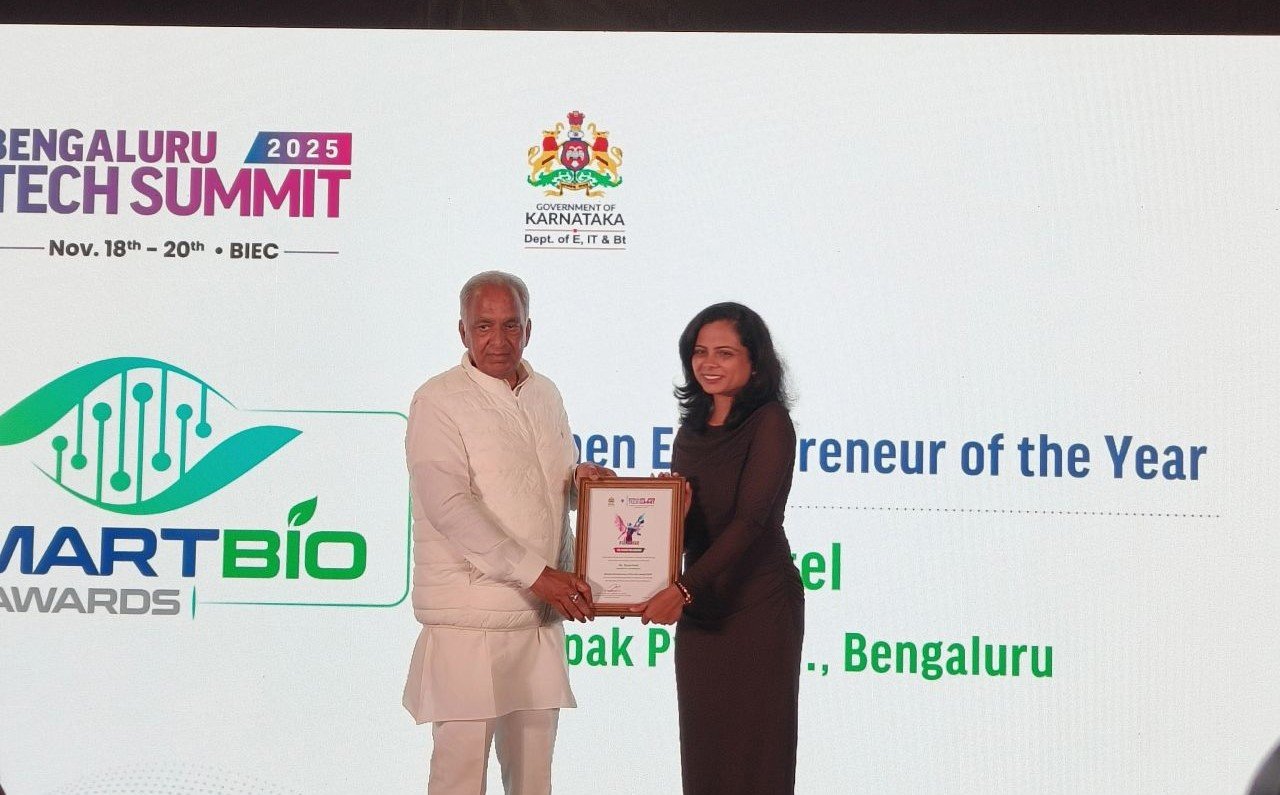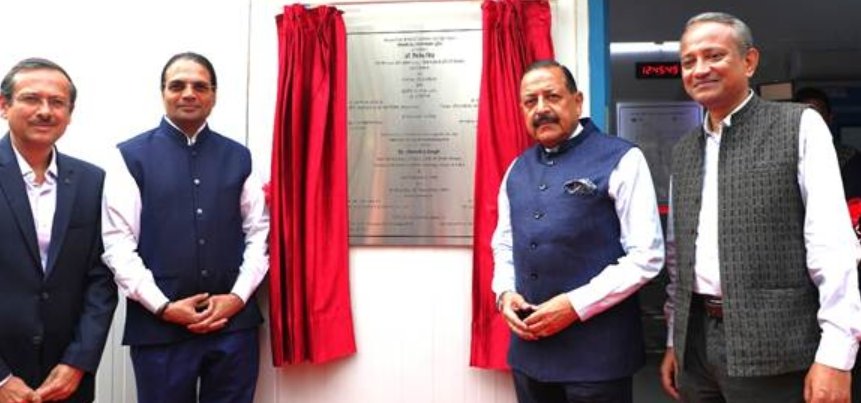India's Tryst with Green Technologies
May 08, 2015 | Friday | Features | By BioSpectrum Bureau
India's Tryst with Green Technologies
Biomass electricity plants are eligible for 80 percent Accelerated Depreciation (AD) in the first year
India ranks ninth overall on Ernst and Young LLP's most recent renewables attractiveness Index. Though solar energy has received much attention from the government, here's a look at how the nation has fared in other renewable energies important for environment sustainability.
BioFuel
The National Biofuel Policy initiated in 2009 aimed at mainstreaming biofuels and therefore, envisions a central role for it in the energy and transportation sectors of the country.
"The policy has outlined procedures for next generation fuels from agricultural residue. But the technological advancements have not there been yet. Other future generation fuels such as fuels from microalgae and macro algae (seaweed) have been mentioned but there has been no road-map on how to realize the huge potential of such fuel," said Dr Dheeban Chakravarthi Kannan, fellow, The Energy and Resources Institute (TERI).
The goal of the policy is to ensure that a minimum level of biofuels become readily available in the market to meet the demand at any given time.
"India's target is to have 5 percent biofuel blending in with transportation fuels by now. We are hovering around 0.2-0.4 percent. Basically this is nothing. India has not been able to produce any appreciable quantities of biofuels. This is critical as it relates to substituting the product that makes the biggest pinch on the foreign import bill. The current annual crude oil import bill is about Rs 6,000 billion per year (amounts to 34 percent of the total import bill, by far the biggest share). Yet, we have made no stride in addressing such an important issue," said Dr Kannan.
He added, "Bioethanol from sugarcane molasses has got such a low minimum supporting price that the ethanol produced is first diverted towards potable and chemical industry. Only the left over finds its way into the fuel market. As a result the availability has fluctuated from zero to 0.4 million tons/year in the past decade. The situation of biodiesel is even worse, with reported production levels of zero to 0.1 million tons/year and is mostly utilized in unorganized sectors such as farm vehicles. Compare this to our present annual transportation fuel demand of 92 million tons/year and this is projected to increase to 200-250 million tons/year by 2030."
The government has been supporting these technologies through its funding agencies such as Ministry of New and Renewable Energy and Department of Biotechnology. Dr Kannan further elaborated, "The government also has provisions for private-public partnership funding. But the funding, in general, has been low. More funds could be allocated for active and extensive research in this area that has critical implications on our national economy and environment."
Biogas
Under the National Biogas and Manure Management Program (NBMMP), the government has managed to install about 50 lakh biogas plants in rural and semi-urban areas across the country.
However, reports from various studies, including an official government report on the success of the NBMMP mission show that over 50 percent of these plants have fallen to disuse.
"Despite a well-intentioned attempt to meet the free energy needs of the rural poor, the biogas program has not really met the cooking needs. Today, biogas cooking fuel contributes to less than 1 percent of the total cooking fuel requirement in the country," said Ms Pooja Vijay Ramamurthi, research engineer, cSTEP.
The main challenges have been a lack of incentives to keep the plants running, and lack of operation and maintenance know-how. Mr Suresh NS, senior research engineer, cSTEP further added, "Therefore, we see that there are issues like generation incentives for the plants to be well maintained vs the government, which provides a capital subsidy for the plants and unfortunately does not have a mechanism to ensure the smooth running of the same."
The government could learn from the projects like the Bagepalli plants in Karnataka which have shown tremendous success. Initiated in 2005, this project is NGO run and is still running. They have managed to provide 5,500 households in the Kolar district of Karnataka with clean fuel for cooking. The key to their success has been community engagement and a strict monitoring scheme. Community members from a local council, some of whom are trained in project maintenance, and others monitor the status of the plants. If these plants are running smoothly, then the family members are exempted from paying part of the cost of the biogas plant.
A few potential ways in which biogas plants can be made more effective include increased local community participation, monitoring of plants, and provision of generation incentives.
"As such there are no schemes or guidelines that can influence neither common man nor corporate bodies to include biogas as an integral part of their system. There is also no visibility for such kind of products and projects from governmental bodies," said Mr Zeeshan, Synod Biosciences, a biogas plant manufacturing company.
Solar biomass
The development of a solar-biomass hybrid combination is at a nascent stage in the country.
"In the past, MNRE has created a few solar-biomass demonstration projects: 15 kW capacity with Thermax and TERI for process cooling and 700 kW peak capacity with Megawatt Solutions for process heating. Presently, the Center for Study of Science Technology and Policy (CSTEP) is setting-up a 3 MW solar-biomass hybrid power plant in Bihar in collaboration with Thermax and European partners," informed Mr Narasimhan SV, advisor, cSTEP.
Solar-biomass hybrids are a very good option to provide electricity to communities without electricity access. Organizations like Husk power Systems and Decentralized Energy Systems (DESI) are looking towards this technology. DESI has said that they have installed a solar PV- biomass system where they use the PV system (with storage) to satisfy lighting needs and use the biomass plant to satisfy larger industrial needs (like a rice mill, wheat mill or ice making factory). However, these hybrids haven't found widespread market acceptance.
"There are about 1000 MW of grid-connected biomass plants installed in the country, however the Indian Biomass Power Association (IBPA) states that over 60 percent of them are on their way to be shut down. This is mainly due to unrevised (low) tariffs and feedstock constraints," said Ms Ramamurthi.
With solar and wind getting all the spotlight, the biomass sector has been relegated to the background. However, in order to provide effective energy supply to the country, biomass resources are extremely crucial.
There need to be more proactive steps to promote biomass electricity plants. As large plants find it difficult to get feedstock (5-20 MW), smaller plants need to be encouraged (up to 1 MW). These plants can be used to take care of local rural electricity needs, tied up to telecom towers, or provide irrigation pumping services. As feedstock is an issue, hybrids should be encouraged, with wind and solar.
Biomass can be used to complement the variable nature of these resources.
Biomass plantations can be encouraged, where certain species are grown exclusively to use as fuel. An important first step would be to conduct a more detailed national assessment before utilizing these lands for biomass. The survey will ideally capture residue availability and identify suitable wastelands for plantations of different species. The possibility of briquetting agro-residues should also be explored. The only assessment made on a nation-wide scale by IISc, is a decade old and doesn't explore plantation potential.
A stance similar to the Karnataka Solar Policy 2014 can be adopted, where farmers lease out waste/barren lands to solar companies. Farmers can lease their unutilized barren lands to private companies, who can set up captive feedstock plantations for small-scale biomass plants on a long-term basis.
The long disbursal times of capital subsidies make investors not keen to solely rely on them. Hence, incentives which reward generation should be introduced. Models involving rural entrepreneurs, Electricity Supply Companies (ESCOMs), community ownership and collaboration amongst these stakeholders should be promoted. Depending on the model, appropriate soft loans can be granted.
Biomass electricity plants are eligible for 80 percent Accelerated Depreciation (AD) in the first year. However, AD benefits for biomass plants aren't effective because biomass electricity producers tend to be small ventures, which don't have large profits. To ensure a level playing field, schemes where AD benefits can be traded should be introduced.
Clean Technologies for Clean India Mission
Here's how the embracing of these technologies would help in the Clean India Mission
If the energy demand is met by renewables, the need for fossil fuels will reduce. Thus, there will be a reduction of emissions to the atmosphere, leading to a sustainable environment. The Indian Institute of Tropical Meteorology's recent report shows that open burning of biomass residues causes significant pollution in India. Using these agricultural residues for electricity generation could lower 25-50 percent of the total CO and NO2 emissions in the country.
Cooking in rural India is done by fuel wood in 90 percent of the houses. This is a very polluting resource that causes indoor air pollution, leading to the release of particulate matter and harmful gases. Therefore, replacing this with clean cooking fuel such as biogas will be environmentally sustainable, while at the same time save many lives that are exposed to the harmful effluents. Fuel wood consumption also leads to deforestation which biogas can prevent.
A biogas unit is helpful in controlling the release of methane gas into the atmosphere which is the 2nd direct contributor to global warming after carbon dioxide. Incorporating a proper defecation system at the household or community level and its use to generate biogas along with other bio-wastes will play a significant role in the success of the Clean India Mission. A key factor of the Clean Indian Mission is to dispose of waste in a hygienic way. Hence, biomass waste can be used in gasifiers, combustion plants and biogas plants.
These are renewable fuels; hence they have a significant role to play in cutting carbon emissions. Next generation biofuels such as lignocellulosic liquid fuels (from non-fodder agri-residue) and algal biofuels have large enough scope (20-50 percent) to substitute a significant proportion of fossil fuels.










